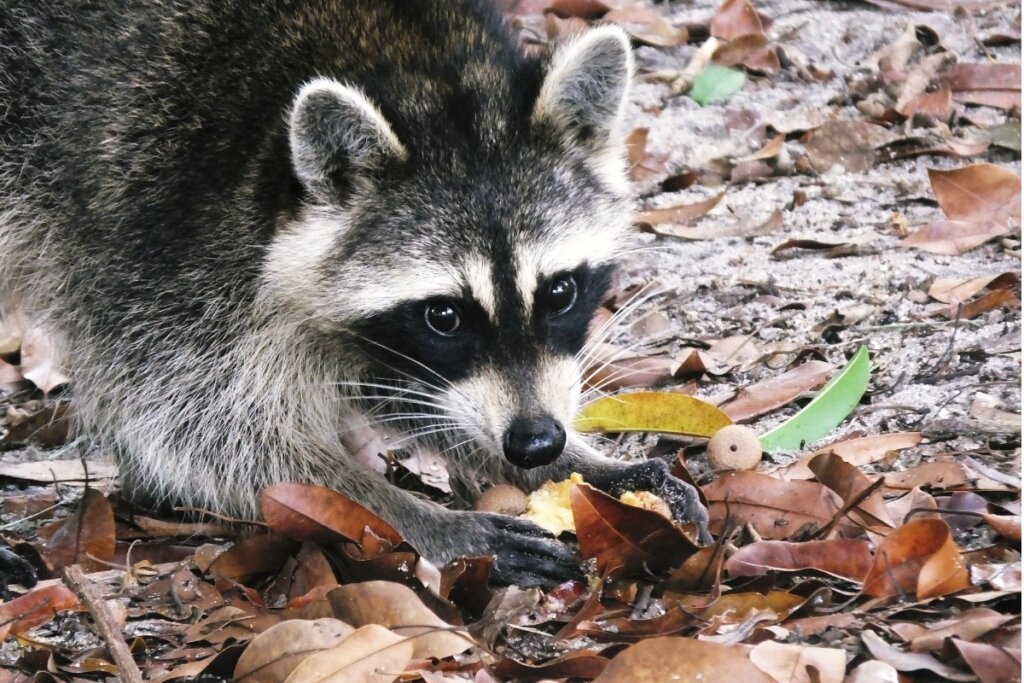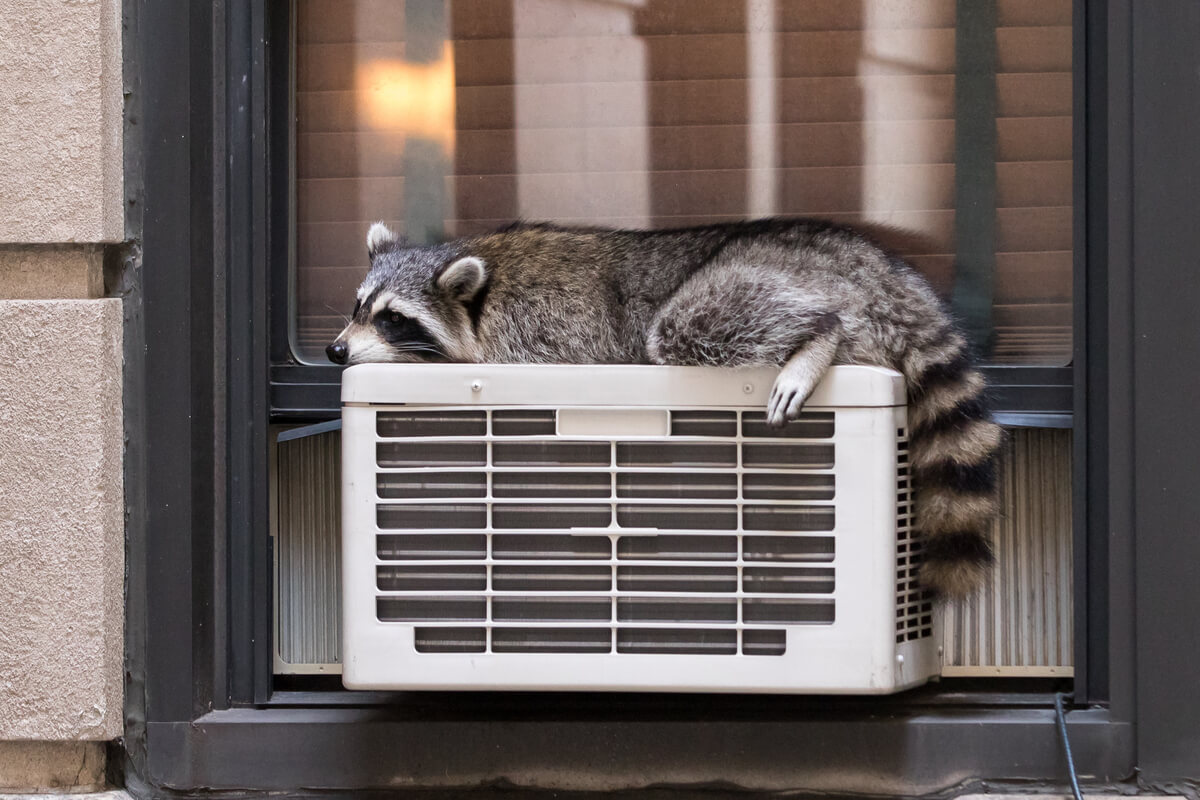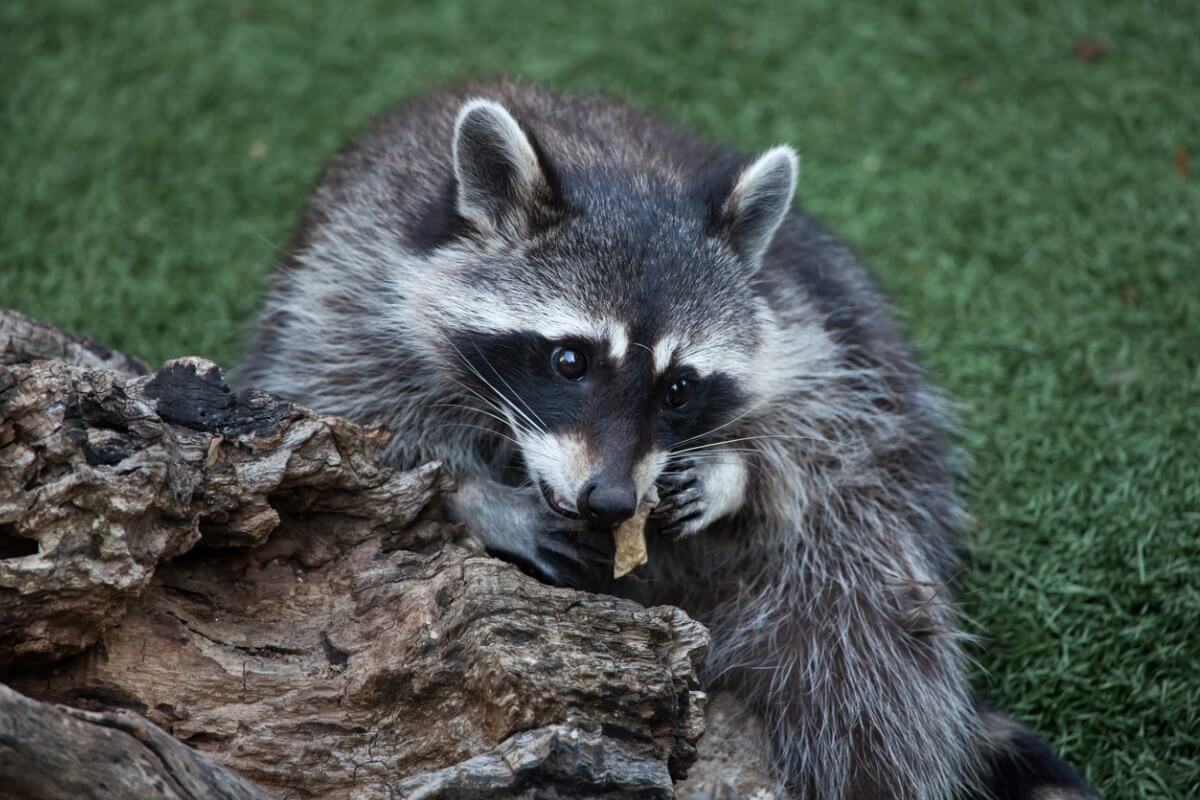What Do Raccoons Eat?

Raccoons are among the most charismatic animals in the whole animal kingdom, which is due to their cute, curious appearance, and their peculiar behavior. In addition, the raccoon is a mammal that tends to look after the food it eats, which has led it to develop such strange habits as “washing” its own food. So, what do raccoons eat? We’ll answer that question today!
A raccoon is any mammal that belongs to the genus Procyon, which currently includes 3 different species. Each of them has certain particular physical aspects, but they share many of their feeding habits. Read on to find out how raccoons eat!
What does a raccoon look like?
Raccoons are furry and compact in appearance, with sizes around 45 centimeters (1.5 feet) in length and a weight of between 4 and 12 kilograms (9-26 pounds). In addition, the typical raccoon has a broad head (with separate ears) that resembles that of a bear. Similarly, the raccoon has flat hind legs (plantigrade) which are also characteristic of the Ursidae.
As for their coloration, these vertebrates have silver-gray fur all over their bodies, although what characterizes them most is the typical black mask that surrounds their eyes. They also have a long, ringed tail, a special feature that sometimes causes confusion with its relative the ring-tailed cat (Bassariscus genus).
Likewise, their front legs have agile fingers and claws that are used to manipulate various objects. Thanks to its “hands”, it’s able to open doors, jars and containers, which makes it quite curious about all sorts of things. Raccoons are also very dexterous with their limbs, which makes it easy for them to obtain food in almost any environment.
Raccoons are skilled, dexterous and very intelligent animals.

What do raccoons eat?
Raccoons eat omnivorously and opportunistically, as they adapt well to the resources that exist in their environment. In addition, it’s considered a versatile hunter with great running, swimming, and climbing skills. Consequently, the sum of these skills are the reason why the raccoon is able to invade other habitats, which causes it to be considered a pest in some countries.
Although they’re able to eat almost anything, the specimens of the species included in the genus Procyon have a preference for some types of food. The most common items that make up their diet are as follows:
- Vegetables: seeds and fruits.
- Insects: mostly crickets, ants, beetles and grasshoppers.
- Crustaceans: crayfish.
- Birds: some seed-eaters, sparrows, pigeons and turtledoves, as well as their eggs.
- Fish: small or medium-sized fish, always freshwater.
- Mammals: rodents.
- Mollusks: gastropods and bivalves.
- Reptiles: lizards and small geckos.
Because these animals live in urban areas with humans, they’re also able to feed on food scraps. This explains why they’re often found in garbage cans, dumpsters and garbage bags in towns and cities, scavenging late at night. Sometimes they even steal dog and cat food if it’s located in the yard.
This behavior, in conjunction with their nocturnal activity, is to blame for society’s perception of raccoons as “thieves”.
Do raccoons wash their food?
Raccoons sometimes soak their food several times in water. Contrary to popular belief, this movement doesn’t appear to be “washing” their food, but rather a way to explore and hunt for prey underwater. Despite being uncommon behavior, this helps these mammals to attract the attention of their victims and capture them.
Anyway, raccoons can also perform this curious movement on sand or snow too, so it isn’t necessary for there to be water. This seems to indicate that the action of “washing” isn’t entirely intended as a hunting method, as they don’t attract creatures underground with these actions.
On the other hand, some zoologists at Kyoto University believe that this technique helps to remove harmful substances (such as dirt or toxins) from the surface of the food. So, based on different research, it seems that this behavior pattern may serve a double purpose, both to sanitize the food and to attract prey in the aquatic environment.
Can I keep a raccoon as a pet?
Although it may seem like a good idea, keeping a raccoon as a pet is not a good option. Although they’re quite adaptable to different habitats, they’re also quite independent and not very homely. Wanting to keep one of these mammals at home will only create stress in them, and endanger the owner at the same time.
In addition, due to poor management and the irresponsibility of some people, raccoons are considered invasive in several areas of the world. For this reason, some countries such as Mexico and Spain have banned them as pets. These bans seek to give them a dignified life and prevent them from becoming an ecological problem.
Owning a raccoon is illegal in most regions of the world.

Raccoons have adaptable diets that allow them to be successful in almost any available environment. While this is a direct benefit to these mammals, it also makes them a potential danger to the ecosystem, as they can invade habitats outside of their own. These species are very well adapted for the wild, but not for a restricted domestic existence.
All cited sources were thoroughly reviewed by our team to ensure their quality, reliability, currency, and validity. The bibliography of this article was considered reliable and of academic or scientific accuracy.
- Mochida, K., & Matsui, K. (2007). Counter-defense technique to mitigate prey toxicity in raccoons (Procyon lotor). Mammal Study, 32(3), 135-138.
- Guerrero, S., Sandoval, M., & Zalapa, S. S. (2000). Determinación de la dieta del mapache (Procyon lotor hernandezii Wagler, 1831) en la costa sur de Jalisco, México. Acta zoológica mexicana, (80), 211-221.
- Salgado, I. (2015). Mapache – Procyon lotor. En: Enciclopedia Virtual de los Vertebrados Españoles. Salvador, A., Barja, I. (Eds.). Museo Nacional de Ciencias Naturales, Madrid. http://www.vertebradosibericos.org/
- Lotze, J. H., & Anderson, S. (1979). Procyon lotor. Mammalian species, (119), 1-8.
- Gatti, A., Bianchi, R., Rosa, C. R. X., & Mendes, S. L. (2006). Diet of two sympatric carnivores, Cerdocyon thous and Procyon cancrivorus, in a restinga area of Espirito Santo State, Brazil. Journal of Tropical Ecology, 22(2), 227-230.
